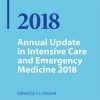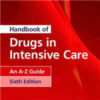Annals of B-Pod: Neurogenic Shock
tamingthesru.comShock is defined as the failure of circulation to provide adequate oxygenation to meet cellular demand. To better identify and manage this compromised physiologic state, shock is subcategorized into four overlapping mechanistic models: hypovolemic, cardiogenic, obstructive, and distributive. Neurogenic shock is a subset of distributive shock caused by a spinal cord injury (SCI) with associated loss of sympathetic innervation to the heart and systemic vasculature. With the sympathetic trunks damaged, the uninjured vagus nerve provides unopposed parasympathetic innervation to the heart. Clinically this causes hypotension and bradycardia, which are the hallmark features of neurogenic shock. Spinal cord injuries are devastating injuries and often occur in otherwise healthy individuals whose lives will be forever changed. Emergency physicians are often the first providers that come into contact with these patients, and aggressive resuscitation and minimization of secondary injury in the ED is extremely important. With early recognition of neurogenic shock and appropriate intervention, emergency physicians can truly make a difference in these patients’ lives and give them the best chance at a meaningful recovery.

















